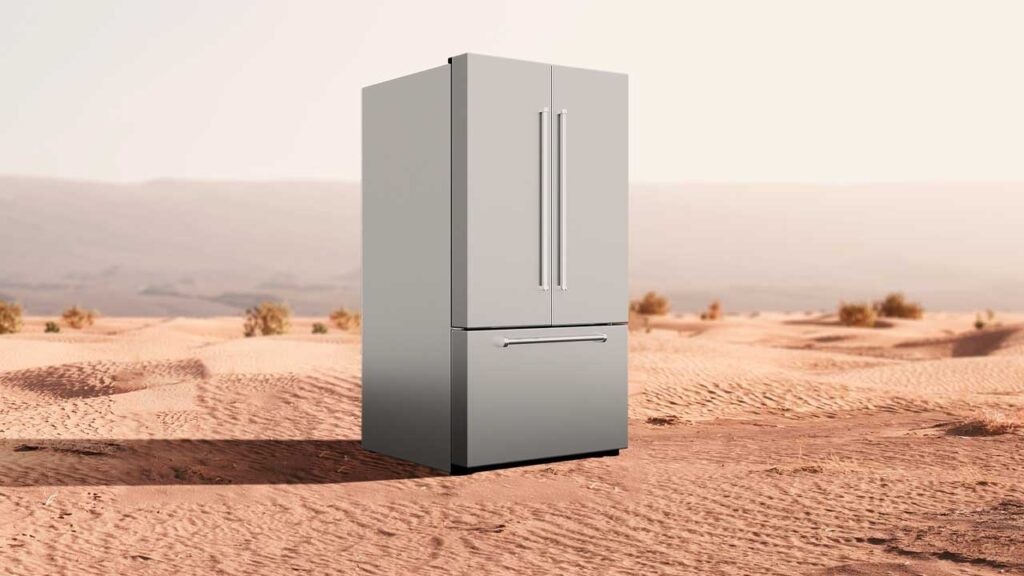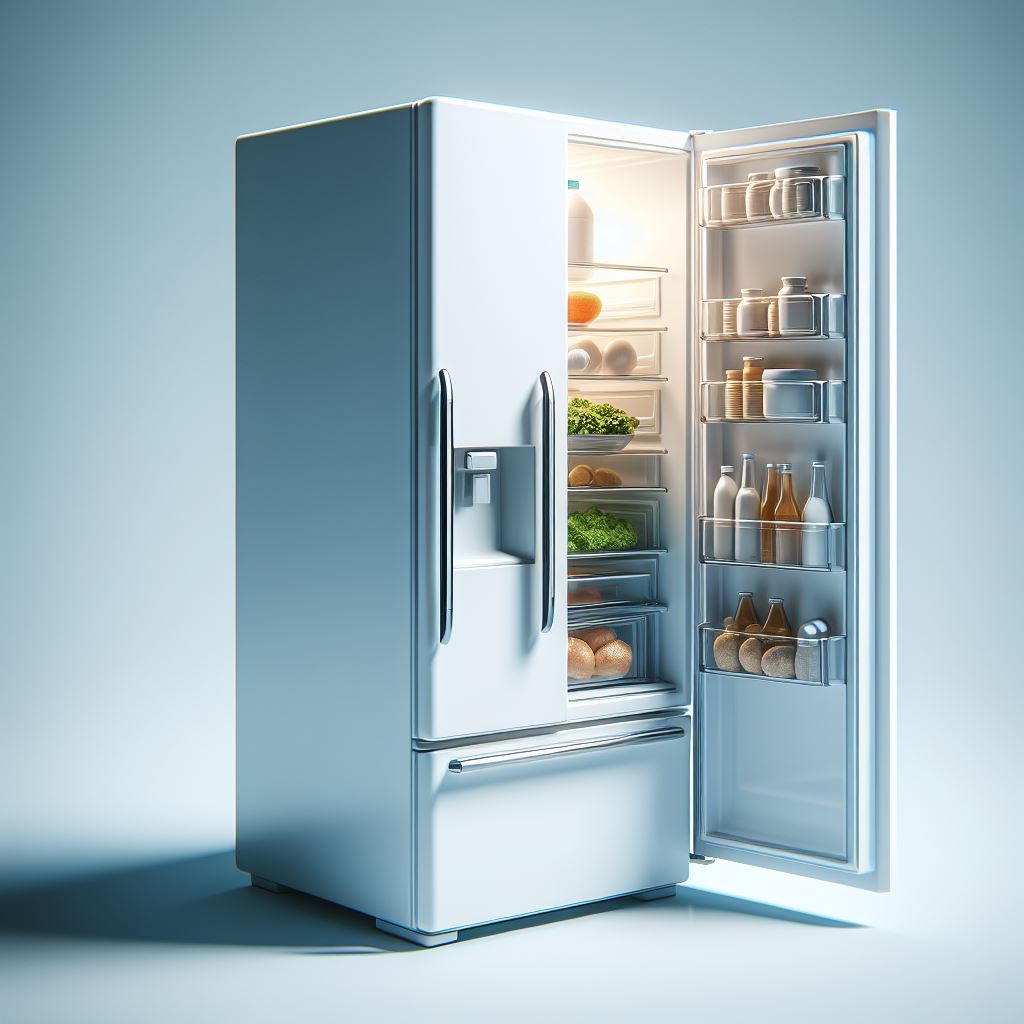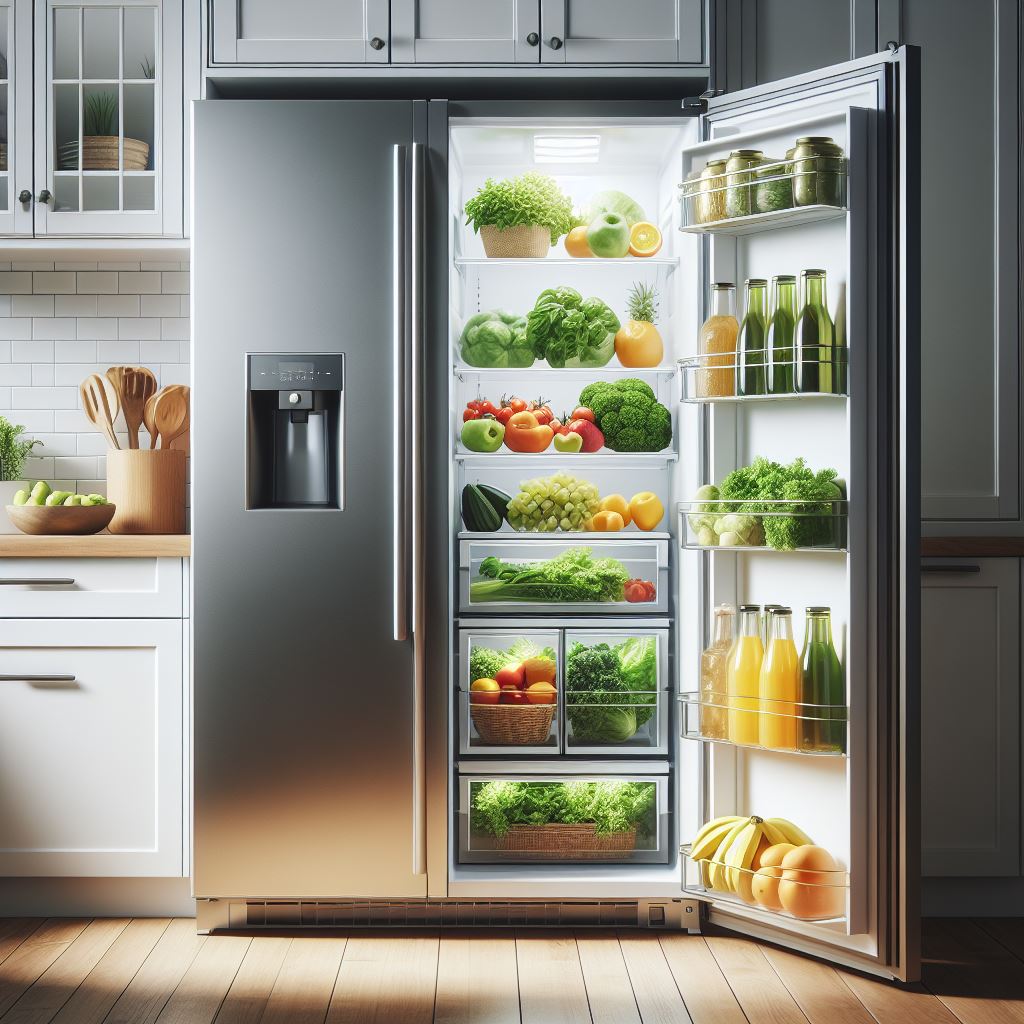A refrigerator is one of the most essential appliances in any household, but it also consumes a significant amount of electricity. Knowing how many watts your refrigerator uses can help you estimate its energy consumption and cost, as well as plan for a backup power system in case of an emergency. In this article, we will explain how to find out the wattage of your refrigerator, how to calculate its energy usage and cost, and how to reduce its power consumption and save money on your electricity bill.
What is Wattage and Why Does It Matter?
Wattage is a measure of electrical power, or the rate at which electricity is consumed or produced. One watt (W) is equal to one joule (J) of energy per second. The higher the wattage of an appliance, the more electricity it uses.
The wattage of a refrigerator depends on several factors, such as the size, model, age, features, and settings of the appliance. Generally, refrigerators have two types of wattage: running wattage and starting wattage.
- Running wattage is the amount of power that a refrigerator uses to maintain its normal operation, such as keeping the temperature constant and running the compressor, fan, and lights. Running wattage is usually lower than starting wattage.
- Starting wattage is the amount of power that a refrigerator uses to start up its components, such as the compressor and fan. Starting wattage is usually higher than running wattage, but it only lasts for a few seconds.
The average running wattage of a refrigerator ranges from 100 to 400 watts, depending on the size and model. The average starting wattage of a refrigerator ranges from 800 to 1200 watts, depending on the size and model.
Knowing the wattage of your refrigerator can help you understand how much electricity it consumes and how much it costs to run. It can also help you determine the size and capacity of a generator or an inverter that you may need to power your refrigerator in case of a power outage.
How to Find Out the Wattage of Your Refrigerator
There are several ways to find out the wattage of your refrigerator. Here are some of the most common methods:
Check the manufacturer’s label or manual.
Most refrigerators come with a label or a manual that specifies their voltage, amperage, and wattage. The label is usually located on the back or inside of the appliance. The manual may be available online or in print. You can use these values to calculate the running and starting wattage of your refrigerator.
Use an online calculator or database.
There are many online tools that can help you estimate the wattage of your refrigerator based on its brand, model, size, and features. For example, you can use this refrigerator wattage calculator or this refrigerator energy database to find out the approximate wattage of your appliance.
Use an electricity monitor or a multimeter.
You can also measure the actual power consumption of your refrigerator by using an electricity monitor or a multimeter. An electricity monitor is a device that plugs into an outlet and displays the voltage, current, power, and energy usage of any appliance that is connected to it. A multimeter is a device that measures various electrical properties, such as voltage, current, resistance, and power. Y
ou can use either device to measure the running and starting wattage of your refrigerator by following these steps:
- Plug the electricity monitor or the multimeter into an outlet that is connected to the same circuit breaker as your refrigerator.
- Connect your refrigerator to the electricity monitor or the multimeter using an extension cord.
- Turn on your refrigerator and wait for it to start up.
- Read the power value displayed on the electricity monitor or the multimeter. This is the starting wattage of your refrigerator.
- Wait for your refrigerator to stabilize its operation and read the power value again. This is the running wattage of your refrigerator.
How to Calculate the Energy Usage and Cost of Your Refrigerator?
Once you know the running and starting wattage of your refrigerator, you can calculate its energy usage and cost by using these formulas:
· Energy usage (kWh) = Power (W) x Time (h) / 1000
· Energy cost ()=Energyusage(kWh)xElectricityrate(/kWh)
For example, let’s assume that you have a refrigerator that has a running wattage of 200 watts and a starting wattage of 1000 watts. Let’s also assume that you use your refrigerator for 24 hours a day and that your electricity rate is 12 cents per kilowatt-hour (kWh).
To calculate the daily energy usage and cost of your refrigerator, you need to estimate how long it runs and how often it starts up in a day. This may vary depending on your usage habits, ambient temperature, fridge settings, and other factors. For simplicity, let’s assume that your refrigerator runs for 16 hours and starts up 8 times in a day.
- Daily running energy usage (kWh) = 200 W x 16 h / 1000 = 3.2 kWh
- Daily starting energy usage (kWh) = 1000 W x 8 x 10 s / 1000 / 3600 = 0.022 kWh
- Total daily energy usage (kWh) = 3.2 kWh + 0.022 kWh = 3.222 kWh
- Total daily energy cost ($) = 3.222 kWh x $0.12/kWh = $0.38664
To calculate the monthly and yearly energy usage and cost of your refrigerator, you need to multiply the daily values by the number of days in a month and a year, respectively. For example:
- Monthly energy usage (kWh) = 3.222 kWh x 30 days = 96.66 kWh
- Monthly energy cost ($) = $0.38664 x 30 days = $11.5992
- Yearly energy usage (kWh) = 3.222 kWh x 365 days = 1175.03 kWh
- Yearly energy cost ($) = $0.38664 x 365 days = $141.1236
These values are only estimates and may vary depending on your actual refrigerator model, usage habits, electricity rate, and other factors.
How to Reduce the Power Consumption and Cost of Your Refrigerator?
There are many ways to reduce the power consumption and cost of your refrigerator and save money on your electricity bill. Here are some of the most effective tips:
- Keep your fridge in good condition and clean it regularly. A dirty or poorly maintained fridge can reduce its efficiency and increase its power consumption. Make sure to clean the interior and exterior of your fridge, check and replace the door gasket if it is worn or damaged, and dust off the condenser coils at the back or bottom of your appliance.
- Keep your fridge in a cool place and away from heat sources. A fridge that is exposed to high temperatures or direct sunlight will have to work harder to keep its contents cold, which will result in higher power consumption. Place your fridge in a well-ventilated area and avoid placing it near ovens, stoves, dishwashers, windows, or other heat sources.
- Set the right temperature for your fridge and freezer, and use the energy saver switch if you have one. The ideal temperature for your fridge is between 37°F and 40°F, and the ideal temperature for your freezer is between 0°F and 5°F. Setting the temperature too low or too high can waste energy and spoil your food. Some fridges have an energy saver switch that reduces the power consumption of the appliance by turning off the heaters that prevent moisture buildup on the exterior of the fridge. Use this switch when the humidity level is low or when you don’t need to prevent condensation on your fridge.
- Defrost your fridge regularly and avoid frost buildup. A frosty freezer can reduce the efficiency of your fridge and increase its power consumption by up to 30%. Make sure to defrost your freezer whenever the ice layer exceeds a quarter of an inch, or follow the manufacturer’s instructions for defrosting your appliance. You can also use a frost-free or auto-defrost model that prevents ice buildup by automatically melting it with a heating element.
- Fill your fridge, but don’t overcrowd it, and organize your food properly. A full fridge can maintain its temperature better than an empty one, as the cold items act as thermal mass that helps keep the air cool. However, don’t overfill your fridge, as this can block the air circulation and cause uneven cooling. Leave some space between items and shelves, and arrange your food according to their temperature requirements. For example, store dairy products, eggs, meats, and leftovers on the lower shelves where it is colder, and store fruits, vegetables, condiments, and beverages on the upper shelves or door compartments where it is warmer.
- Close the refrigerator door properly and avoid opening it too often. Every time you open the refrigerator door, you let out cold air and let in warm air, which forces your fridge to use more power to restore its temperature. Make sure to close the door tightly after every use, and avoid opening it unnecessarily or for too long. Plan ahead what you need from your fridge before opening it, and use transparent containers or labels to identify your food easily.
- Upgrade your fridge to an energy-efficient model if possible. If you have an old or inefficient fridge that consumes a lot of power, you may want to consider replacing it with a new or refurbished model that has a higher energy efficiency rating. Look for models that have an Energy Star label, which means they meet strict standards for energy performance set by the Environmental Protection Agency (EPA) and the Department of Energy (DOE). According to Energy Star 1, replacing a fridge made before 1993 with a new one that has an Energy Star label can save you up to $260 in energy costs over the next five years.
By following these tips, you can reduce the power consumption and cost of your refrigerator and save money on your electricity bill. You can also help the environment by reducing your carbon footprint and greenhouse gas emissions.
FAQ
Here are some frequently asked questions and answers about the wattage and energy usage of refrigerators:
Q: How can I find out the electricity rate in my area?
A: You can check your electricity bill or contact your utility company to find out the electricity rate in your area. The electricity rate is usually expressed in cents per kilowatt-hour (kWh) and may vary depending on the time of day, season, or demand.
Q: How can I convert watts to amps or volts?
A: You can use the following formulas to convert watts to amps or volts, assuming a standard voltage of 120 volts in the US:
Amps = Watts / Volts
Volts = Watts / Amps
For example, if your refrigerator has a running wattage of 200 watts, you can calculate its amperage and voltage as follows:
Amps = 200 W / 120 V = 1.67 A
Volts = 200 W / 1.67 A = 120 V
Q: How can I use a generator or an inverter to power my refrigerator in case of a power outage?
A: You can use a generator or an inverter to power your refrigerator in case of a power outage, but you need to make sure that they have enough capacity and compatibility to handle the load. A generator is a device that converts mechanical energy into electrical energy, while an inverter is a device that converts direct current (DC) into alternating current (AC).
To choose the right generator or inverter for your refrigerator, you need to consider the following factors:
- The running and starting wattage of your refrigerator. You need to choose a generator or an inverter that has a higher wattage than the starting wattage of your refrigerator, as this is the peak power demand that your appliance will require. For example, if your refrigerator has a starting wattage of 1000 watts, you need to choose a generator or an inverter that has at least 1000 watts of output power.
- The type and number of outlets on your generator or inverter. You need to choose a generator or an inverter that has compatible outlets for your refrigerator’s plug type and voltage. For example, if your refrigerator has a standard three-prong plug that requires 120 volts, you need to choose a generator or an inverter that has a three-prong outlet that provides 120 volts.
- The run time and fuel type of your generator or inverter. You need to choose a generator or an inverter that can run for as long as you need to power your refrigerator, and that uses a fuel type that is available and affordable for you. For example, if you need to power your refrigerator for 24 hours, you need to choose a generator or an inverter that has enough fuel capacity and efficiency to run for 24 hours, and that uses gasoline, diesel, propane, solar, or other fuel sources that you can access and afford.
We have explained how to find out the wattage of your refrigerator, how to calculate its energy usage and cost, and how to reduce its power consumption and save money on your electricity bill. We hope that this article has been helpful and informative for you. If you have any questions or feedback, please feel free to leave a comment below.







